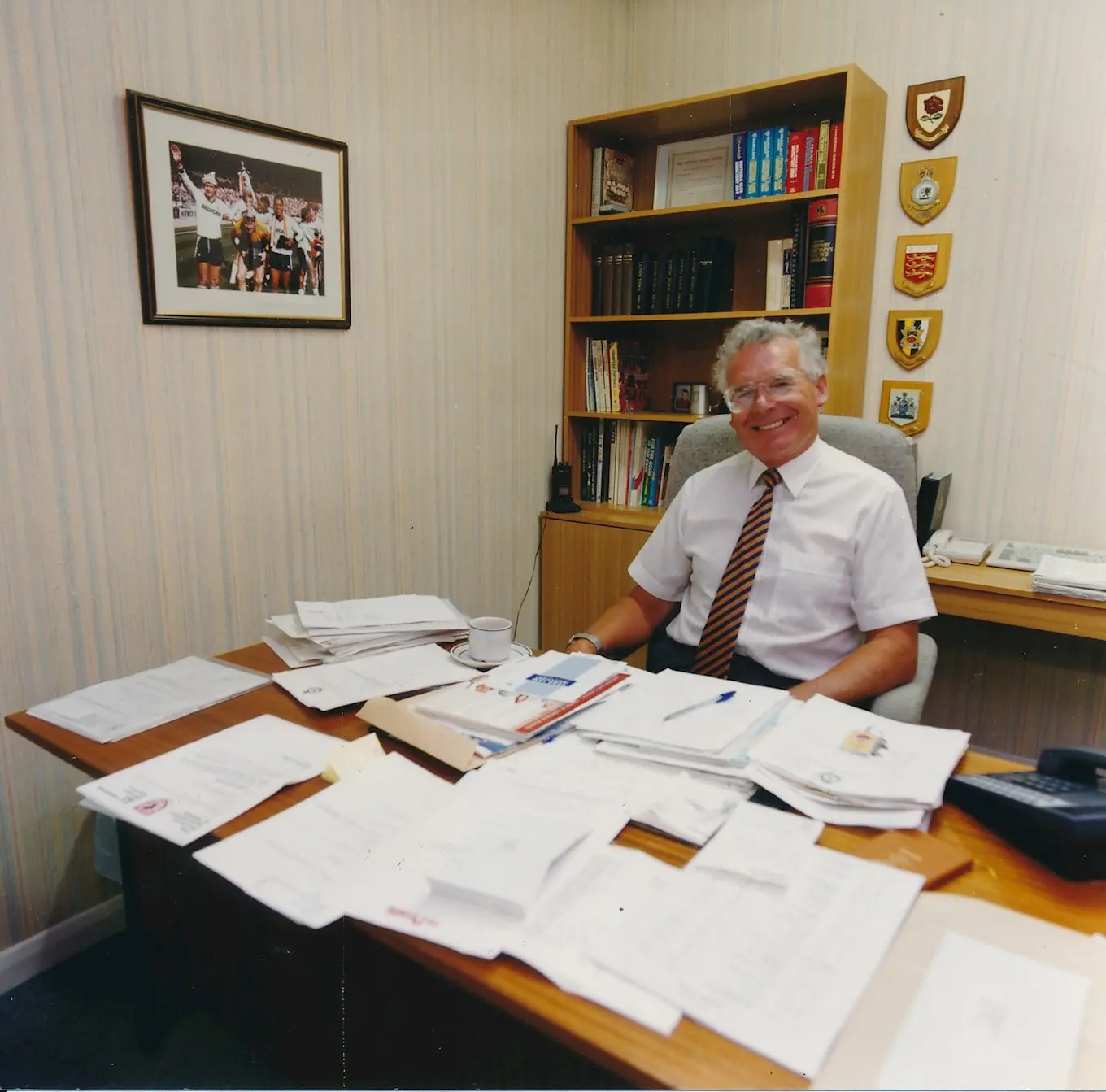Today marks the centenary of the official opening of the Main Stand at Kenilworth Road – a structure which still stands strong and proud and which has witnessed football at seven different levels, crowds of over 30000 and in the hundreds, famous international players and those who are lost in the mists of time.
On the night of Saturday March 11th 1922, following a 2-1 home defeat to Aberdare, Charles Green the club’s long-serving Secretary who lived in Hazelbury Crescent, was awoken from his bed by knocking on his door. A Mr King from Kenilworth Road had seen a small blaze and by the time the two gentlemen arrived at the scene the whole of the old main stand, offices and dressing rooms were well alight.
The Fire Brigade, who had been notified from three street alarms, were on the scene quickly but Chief Officer Andrews saw at once that the only useful work the Brigade could do was to prevent the fire spreading to other parts of the ground. Nothing of any value was recovered from the debris.
The old wooden stand, which the club had taken from the Dunstable Road ground when they moved to Kenilworth Road in 1905, was reduced to ashes with the players needing to be kitted out with new boots and strip when they reported for training the following Monday and then use the Public Baths
An insurance claim for £3481 was immediately submitted to Royal Exchange, of which club director Ernest Gibbs was an agent. The claim was settled at £2100 within a month of the fire.
A year before the fire, the club had asked for quotes for a new stand but deemed it too expensive to proceed. Now armed with the insurance claim money the building of a new stand was made financially easier!
The site was cleared as soon as the 1921-22 season ended but work on the new stand did not commence until mid-June due to the club’s appointed contractor, Ernest Pryer and Sons of Maple Road, needing to carry out work on the old wooden structure (another legacy from Dunstable Road), on the Lane (Bobbers Stand) side of the ground.
Two months in construction, the stand was ready to be used by the start of the 1922-23 campaign on 26th August. The local newspapers, who had been following construction at regular intervals, all carried reports on the finished structure. One has been picked out at random.
“The stand itself will seat about 3400 – and this number could very well have been larger but for the pains taken to study the comfort of patrons, as there is a seating space of something like 22000 square feet.
There are five bays, each 40 feet in width, and those nearest the Maple Road end run to a depth of 24 rows of seats, rising to a height of 40 feet, and affording a view which altogether puts in the shade the advantage Pressmen used to enjoy in the ‘Crows Nest’ at the top of the old stand.
There are no separate tip-up seats anywhere, but generous consideration has been shown in the allotment of seating space and back rests, and the reserved seats and those allotted for home and visiting directors and officials are comfortably upholstered. There are eight rows of reserved seats immediately behind the commodious and nicely situated Press Box (still there!).
Nearly 70 tons of steel have been used in the erection of the stand and over 12 tons of corrugated iron in the roof; the quantity of timber employed would be difficult to estimate.
From the concrete retaining wall in front of the stand are 21 rows of terracing running down to another concrete wall bounding the playing enclosure and surmounted by three rows of steel bars. The lowest part of the terrace is below the level of the pitch. The rise all through is ample, and one thing certain to be appreciated is that the 15 inches width of each terrace afford plenty of comfortable standing space.
Beneath the stand, provision is being made for a ladies cloak-room, lavatory accommodation and a public tea bar for stand patrons. The buildings beneath the stand occupy a total floor space of some 2200 feet.
The player’s dressing rooms are situated at the Maple Road end and it is the general verdict that they are far ahead of the average in both size and arrangement. Each one is almost as large as the two previously possessed by the Town club and represent the very last word in up-to-dateness. Both are fitted with glazed tile plunge baths, washing basins and shower baths.”
On top of all this there was a players recreation room, with space for a full sized billiard table which came two years later, offices, boardroom, drying room, gateman’s room, director’s tea room and a groundsman’s storeroom.
The stand was officially opened before the home game against Charlton on 26th August 1922 by Mr J McKenna and Mr John Lewis, President and Vice President of the Football League with the ceremony involving the hoisting of a flag.
The stand only went as far as the players tunnel with the wing stand (Block F) being added in 1937 following the Town’s promotion to Division Two (now the Championship. The only other change of note was the installing of plastic tip-up seats (bolted straight on to the wooden benches) in 1969.
The stand, erected in 1922, cost £8227 equivalent to £500,000 today.
For as long as I can recall, it was said the stand came second hand from Kempton Park racecourse. When researching the book ‘100 Years at Kenilworth Road’ in 2005 I discovered this was a myth – probably someone said that the large box-like structure looked like it came from a racecourse and the story got embellished in the re-telling.
No mention is made in the club’s minute book and the local press, who would have jumped on a story like this, is silent. The minutes of Kempton Park show that no stand was taken down, demolished, ordered or sold at any time during this period.


